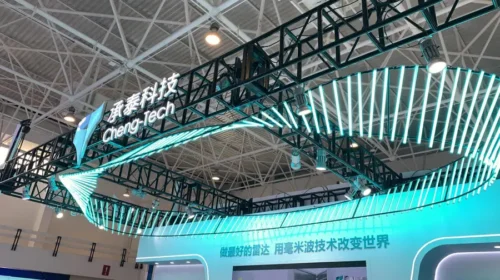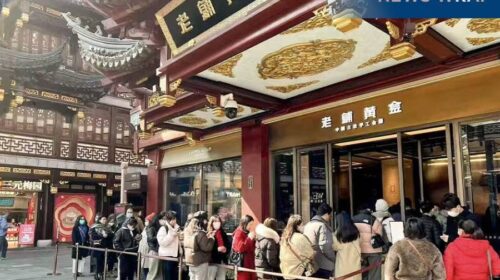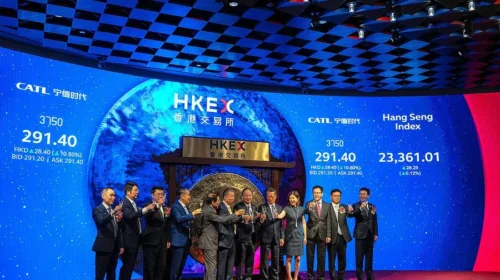Two IPOs: One in Autonomous Driving and One in Gold

Robotaxi operator Pony.ai raised more than $400 million in its U.S. IPO. And jewelry store operator Mokingran raised a smaller $67 million in its Hong Kong listing
By Doug Young & Rene Vanguestaine
As China’s IPO landscape continues to evolve, we’ve seen two recent listings that offer an intriguing glimpse into the country’s shifting market dynamics: one from the high-tech autonomous driving sector, and the other from the more traditional gold retailing space. Both tell us something important about the sectors they represent — sectors that have seen notable shifts in recent months.
First, let’s examine Pony.ai (PONY.US), a leader in China’s burgeoning autonomous driving space. The company raised over $400 million in its IPO, making it one of the largest Chinese listings in the U.S. this year. Its debut was somewhat rocky, with shares falling 7.7% on day one, only to recover and close slightly above their IPO price by the end of the second day. This volatility reflects broader uncertainty surrounding the autonomous driving sector — especially when we compare it to the performance of Pony.ai’s rival, WeRide (WRD.US), which went public in October and has seen its stock rise 12% so far.
Despite the initial ups and downs, the question remains: are these companies built to last? Autonomous driving and robotaxis have been touted as the future of transportation. While their promise seems firmly entrenched in the technological landscape, it’s also a sector fraught with uncertainty. Just how long it will take for consumers to fully embrace the idea of taxis without drivers remains a significant challenge. Unlike individual drivers, who can opt into or out of autonomous vehicles, the future of robotaxis will force consumers into a new paradigm where they may not have a choice.
The outlook for Pony.ai and its competitors will ultimately hinge on how quickly they can scale and whether they can overcome consumer hesitation. Though the technology is likely here to stay, the pace of adoption remains uncertain, and incidents during the trial period could also cast some shadows.
On the geopolitical front, both Pony.ai and WeRide also face additional hurdles. The political risks tied to Chinese tech firms, particularly those collecting vast amounts of data on roads and traffic patterns, can’t be overstated. This is especially true in the context of U.S.-China relations, where concerns over data and national security have already affected companies like Hesai (HSAI.US). Ongoing geopolitical tensions between China and the West, particularly the U.S., may limit these firms’ ability to expand or gain full access to critical markets. The incoming Trump administration’s rhetoric about tariffs and anti-China sentiment are also lingering, which likely dampened investor enthusiasm for Pony.ai’s IPO. How these political factors evolve, as well as how companies navigate the regulatory landscapes in the U.S. and Europe, will be crucial to their global success. It’s clear that Southeast Asia and Latin America may be more welcoming markets, but the future for Chinese autonomous driving companies in the U.S. and Europe remains in question.
A gold rush by Mokingran
On the opposite end of the spectrum, we have Mokingran (2585.HK), a more traditional player in the jewelry sector. The company, which specializes in gold jewelry, opted for a listing in Hong Kong and raised a more modest $67 million. Gold has long been a safe-haven asset for Chinese consumers, particularly in the current climate of economic uncertainty. As China’s economy has slowed in recent years, many have turned to gold jewelry as a hedge, increasing sales for companies like Mokingran. However, gold remains a volatile asset, and the thin margins of jewelry sales can be a double-edged sword. While gold prices have spiked recently, they can just as easily dip, leaving investors exposed to the unpredictable fluctuations of both the global market and consumer sentiment.
Investors in this space must grapple with the reality that, while gold is often seen as a safe bet, the market for jewelry itself can be fickle. Gold’s long-term value can swing dramatically, influenced by inflation, geopolitical risks, and changes in consumer behavior. The economic slowdown has already led to a dip in sales for larger players like Chow Tai Fook (1929.HK), which reported a 21% drop in sales for the first half of its fiscal year.
For Mokingran, the future seems closely tied to broader market dynamics in China. As the government’s stimulus measures kick in and stock market rallies take hold, the allure of gold may fade. Chinese investors, especially retail investors, are always looking for very quick returns, and they may turn their focus elsewhere if other investment opportunities start showing signs of a rebound. On the other hand, trending sectors rise and fall rapidly in China, often driven by shifting consumer preferences and government policies.
Ultimately, the IPO market for both technology and traditional companies in China shows there is no one-size-fits-all approach to success. While the tech-driven excitement surrounding autonomous vehicles is palpable, it comes with significant risks tied to both technological adoption and geopolitical volatility. Meanwhile, more traditional sectors like gold retailing offer stability but also come with their own cyclical challenges. Investors will need to be keenly aware of these nuances as they weigh their options in a rapidly evolving market.






